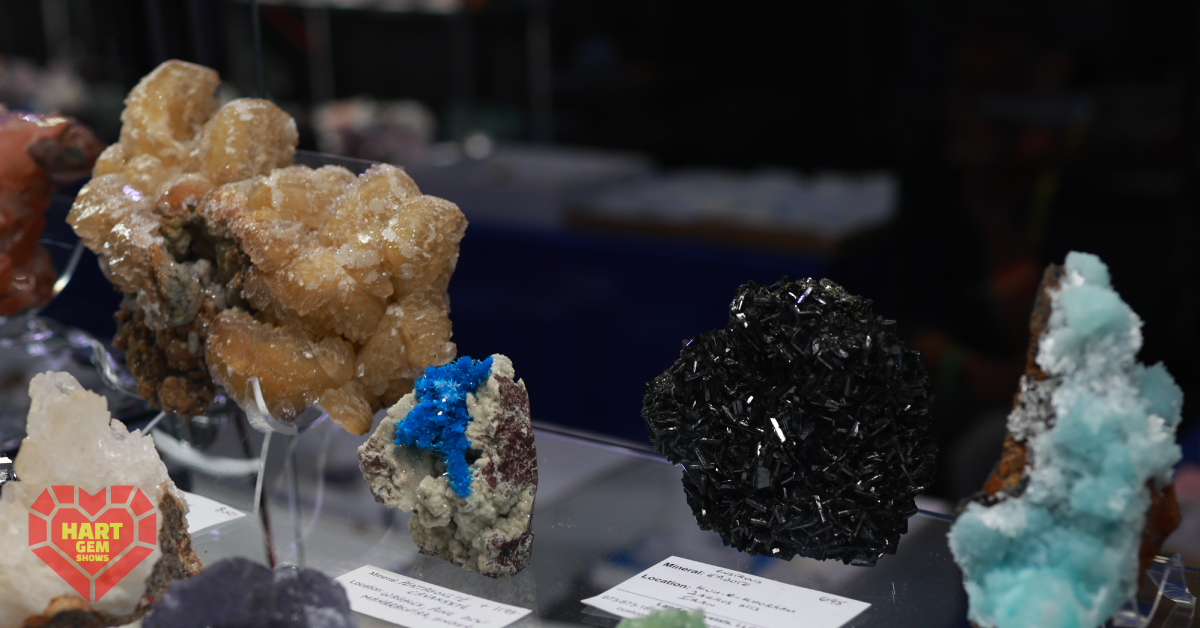When it comes to understanding gemstone quality, the “4 Cs” serve as the foundational criteria used by gemologists to evaluate and grade each stone: Color, Clarity, Cut, and Carat. Whether you’re selecting a dazzling engagement ring or adding to a growing gem collection, comprehending these four aspects will empower you to make more informed and confident decisions. Plus, with several exciting gem and art shows on the horizon, there’s no better time to enhance your knowledge and appreciation for these sparkling treasures.
1. Color
Color is one of the most important factors in determining the quality and value of a gemstone. This characteristic refers not only to the hue of the gem but also to its tone (the depth of color) and saturation (the intensity of the color). In the world of gemstones, more vibrant and pure colors typically equate to higher quality. For example, a deep, velvety blue sapphire or a vivid green emerald is often more valuable than stones with faded or overly dark tones. Color consistency is also crucial; an evenly distributed color without any zoning or patches increases a gemstone’s desirability.
2. Clarity
Clarity refers to the presence (or absence) of inclusions or blemishes within or on the surface of the gemstone. Inclusions are internal imperfections like tiny crystals, fractures, or other materials, while blemishes are flaws found on the stone’s exterior. The fewer these imperfections, the higher the clarity grade and, consequently, the value of the gem. However, it’s important to note that certain gemstones, like emeralds, are naturally more prone to inclusions. In such cases, a stone’s overall beauty and transparency are often prioritized over absolute clarity.
3. Cut
The cut of a gemstone isn’t just about its shape but also about how well it has been faceted and polished to enhance its brilliance and visual appeal. A well-cut gem reflects light beautifully, creating sparkle and symmetry. Poorly cut stones may appear dull or lifeless, even if they have excellent color and clarity. For example, diamonds are prized for the way they are cut, as their brilliance is greatly affected by the precision and angles of each facet. In colored gems, the cut also ensures that light moves optimally through the stone, emphasizing its hue and vibrancy.
4. Carat
Carat weight measures the mass of a gemstone, and while it often influences price, bigger isn’t always better. Two stones of equal carat weight may differ significantly in value based on the other three Cs. Moreover, a larger gem with poor color or cut may be less appealing than a smaller, brilliantly faceted one. Carat weight should be considered alongside quality rather than as a standalone factor.
Your Gemstone Journey
Understanding the 4 Cs—Color, Clarity, Cut, and Carat—can transform how you perceive and appreciate gems. Each characteristic interplays with the others to determine the stone’s overall beauty and value. Whether you’re shopping for a jewel or merely deepening your knowledge, these principles are key to making the perfect choice.
Attending the upcoming Tucson Gem Show (January 30 – February 16, 2025) is an excellent way to explore this fascinating intersection of culture, history, and geology, and to see how different communities around the world have cherished and interpreted these stunning natural treasures. Don’t miss the opportunity to deepen your understanding and appreciation of these precious stones!

